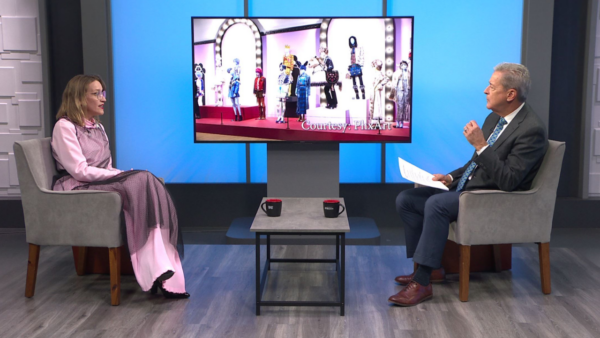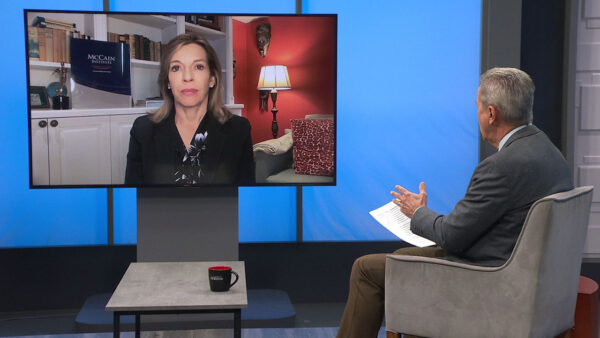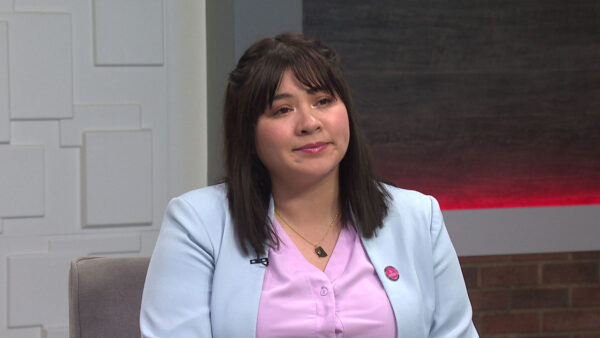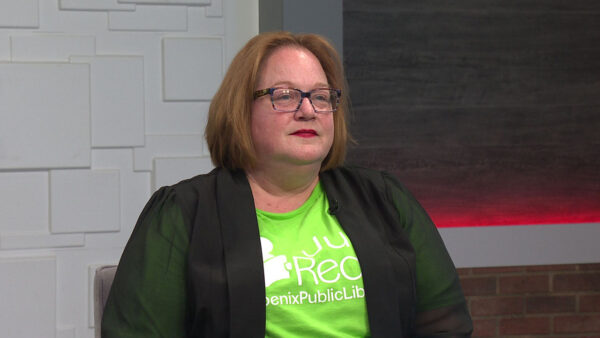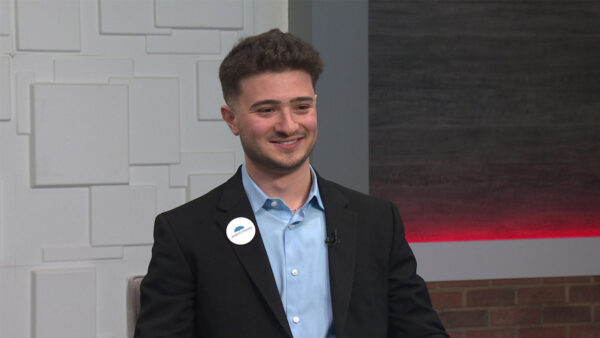The Environmental Protection Agency has issued a final rule to control emissions from the Navajo Generating Station in Northern Arizona. Not all are happy with the new rules. Sandy Bahr, director of the Grand Canyon Chapter of the Sierra Club, will discuss her organization’s concerns.
Ted Simons: Good evening, and welcome to "Arizona Horizon," I'm Ted Simons. The U.S. Environmental Protection Agency yesterday issued new rules to reduce emissions from the Navajo Generating Station. The new rules incorporate recommendations from a technical working group made up of stakeholders and the power plant's owner-operators. Sandy Bahr is the director of the Grand Canyon chapter of the Sierra Club, which is not on board with the new rules. Thank you for joining us. Before we get to your concerns, what exactly did the EPA decide yesterday?
Sandy Bahr: Basically what the EPA did is, instead of going with the proposal that it came out with, which is the proposal that met the Clean Air Act requirements, the EPA has chosen to go with a proposal submitted by this technical working group, which includes Salt River Project. And they basically have said they are going with a proposal that allows significant delay in cleaning up Navajo Generating Station.
Ted Simons: Did they explain why the delay was a better option?
Sandy Bahr: Well, there is -- it's a long decision, and they -- they explained A little bit. But in some areas they didn't give much explanation at all, which is unfortunate. But overall they are saying because the plant is on tribal land, they can give it a special exception as one of the reasons that they gave. They argue that it -- that it is better than what they proposed. But that's a pretty convoluted argument. Especially if you look at the technical work group proposal. There's really no certainty with it. There's not a clear path to compliance, which is one of the things that we've raised repeatedly. Basically under the proposal that EPA came out with originally, within five years they would have to clean up the plant. Under this, they can just keep running the way they are, and push it out until, you know, 2029. And then if they are at their limit or over, they would have an interim shutdown. Then it could potentially start operating again provided they actually did shut down. So the only thing in it that -- there are these caps on the pollution that kick in, in 2029. And then in 2024 the plant would close, provided the Navajo Nation didn't acquire it. I thought the plan calls for closing up one of those three generating stations by 2020, or at least reducing the equivalent amount of power that would equate to closing one of those plants. Is that not in the plan? It's one of the alternatives, one of the scenarios included. But again, there's no enforceability of emissions reduction on a year-to-year basis. The only thing that is enforceable are the reports, they have to report on emissions. They have to provide the information. And then when they get out to the 2029, if they have exceeded this interim cap, then potentially EPA could say, well, you have to shut down.
Ted Simons: Again, 2029, the idea is that nitrous oxide emissions will be cut by 80%, by 2030. So the story is if they don't hit that 80%, you're concerned that the enforcement measures that have been talked about, aren't strong enough to keep some sort of interim plan, or we can't make this, we've got to figure out plan B, plan C, these sorts of things?
Sandy Bahr: First of all, we don't know what this proposal will do. It's intended to protect the air around Grand Canyon and 10 other national Parks and monuments. Obviously in reducing nitrogen oxide emissions it also helps to protect public health. By allowing them to pollute for a couple more decades potentially, they are continuing to affect these national treasures, as well as affecting public health. Again, they could exceed it and just keep running it, and then do a shutdown. It's going to be bad for everyone, bad for the tribes, bad for -- you know, public health and certainly harmful to Grand Canyon and other places. It sound like -- again, this is the result of five years of talks with environmental groups, tribes, the stakeholders as we mentioned. It sound like the goal was to cut pollution, and also kind of take your time doing it, so that you don't lose too many jobs up there in Northern Arizona. It's a compromise and it sounds like the Sierra Club is not happy with the compromise. But if all these people are at the table talking about this for five years, is it as good as you could have hoped for?
Ted Simons: No, not at all. They could have done much better. A compromise means you still get to comply with the Clean Air Act. It would mean people who are breathing the pollution from this plant are not continuing to breathe the large harmful amounts coming out of it. We're talking about one of the top polluters in the country, certainly the biggest polluter in the region. You know, this is a big deal. They ought to be complying with the Clean Air Act. This has been around for a long time. This is not a new provision in the Clean Air Act. It's not like Congress just passed this a couple years ago, and we're saying, oh, you have to do this right away. You know, they had 20 years to reduce emissions to comply with this. Now they want to stretch it out a couple more decades. That's just unacceptable, that's not a good compromise. As far as the retrofitting, the Clean Air Act and getting that in line the EPA even recognized that the threat of the plant closing down and the effect it would have on CAP, jobs in Northern Arizona, the whole nine yard, was enough for them to consider this particular compromise. Again, can you at least see where they are coming from on that?
Sandy Bahr: Well, I can understand that they want to look at all of the issues and should. And so did we. But this proposal allows the plant to continue to pollute for a much longer period of time. And it does, it harms people in the region. Starting now to look at a transition plan would be appropriate. How is this going to be helpful to people who work there if they run this dirty plant up until 2029, and say, okay, we're shutting it down. That doesn't help anyone. We really think that they need to implement the Clean Air Act, clean it up, work for promoting clean energy throughout Arizona. I mean, that's something that we have been working on for decades. We're big supporters of renewable energy, energy efficiency programs and those are programs that can provide good jobs that are more sustainable, and that don't create the same kind of health problems we see from this coal plant. EPA said that over time there would be a 72% improvement of haze at the Grand Canyon. This is over time, it's only 72%. I know it's not 80% or 90%, but is it good enough at least for a plan, at least to get started? We could be talking about developments here in the next decade or so that could make this whole thing obsolete, couldn't we?
Sandy Bahr: Well, you could argue that the coal plant is obsolete. That's why Nevada Energy and L.A., they are getting out of the plant they are not investing in coal. Coal is a high risk. So you're seeing states and individual companies get out of coal generation. It really is an old technology that -- that plant is one of the biggest polluters. Really, delaying the action on it and allowing it to continue to pollute, that just means that, you know, we're subsidizing water with more pollution. And we shouldn't be subsidizing Central Arizona Projects with dirty air. That's just wrong.
Ted Simons: Last question is a lawsuit likely, do you believe, to block implementation of this?
Sandy Bahr: We don't know, we're looking at it right now. We believe strongly that the Environmental Protection Agency has a responsibility to uphold the Clean Air Act, a responsibility to all Americans to protect Grand Canyon and these 10 other Parks and wilderness areas.
Ted Simons: It's good to see you again. Thanks for joining us.
Sandy Bahr: Thank you.
Ted Simons: We should mention tomorrow we will hear from members of the technical working group that successfully put together this plan to reduce emissions at the Navajo Generating Station.
Sandy Bahr:Director, Sierra Club - Grand Canyon Chapter;



















